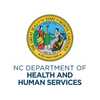What is the relationship between spatiotemporal epidemic surveillance of SARS-CoV-2 in wastewater, vaccine efficacy in school zones, and prolonged COVID-19 burdens?
Share this project
Topics
Project Overview
Summary
The study - a research and engagement partnership - aims to fill critical scientific knowledge gaps in exposure science and the relationship between spatiotemporal epidemic surveillance of SARS-CoV-2 in wastewater, vaccine efficacy in school zones, and prolonged COVID-19 burdens, three areas of public health importance. Anticipated results could be significant for populations impacted by environmental injustice and differentially burdened by SARS-CoV-2 in heavily occupied and variably vaccinated urban school zones and neighborhoods.
Anticipated deliverables
- Weekly project reports detailing wastewater COVID-19 concentration findings and student involvement.
- Wastewater Surveillance at North Carolina Agricultural and Technical State University progress report
- Final presentation on project findings.
Planned use of results
Project partners can use the data to provide guidance for how to address the inequality and disproportionate burden of the pandemic on underserved populations. They can also maintain the surveillance system and continue to develop the partnership as a model for future infectious disease emergency action preparedness and surveillance.
Funding
The NC Office of Strategic Partnerships is providing funding for this project to support a graduate student. The North Carolina Collaboratory is supporting this project with in-kind contributions of a qPCR machine for the duration of the study and relevant equipment training.
Data
The project team is collecting wastewater samples from various Guilford County school zone sites, selected based on poverty level and vaccination rates.
Project Team

NC A&T State University

NC Department of Health and Human Services

Guilford County Health Department

North Carolina Collaboratory
